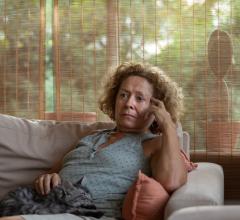February 14, 2008 - At age 20, Vanessa Cirillo suffered a heart attack caused by a virus. She recovered and lived a healthy life until June 2007, when her heart condition became critical. Her heart had enlarged several times its normal size (cardiomyopathy). It was no longer pumping enough blood to sustain her body. She needed a heart transplant but no donor heart was available. To save her life, she was flown from a Las Vegas hospital to University Medical Center (UMC) in Tucson, AZ.
On Aug. 10, 2007, doctors removed Cirillo's dying heart and implanted the CardioWest temporary Total Artificial Heart (TAH-t) as a bridge to human heart transplant.
“Vanessa is only about 5’4, 117 pounds, so we didn’t think the CardioWest artificial heart was going to fit,” explained UMC surgeon Jack Copeland, M.D. “However, because of her enlarged heart, there was enough space to implant the CardioWest. This saved her life because she suffered an unrelated intestinal infection. If she had been on a Left Ventricular Assist Device (LVAD) or any other device, the infection would have killed her.”
With the help of the artificial heart, Cirillo fought through her infection and recovered. Once stabilized, Cirillo began to hit the gym with UMC staff. Physical therapist Robert Bailey challenged her with an increasingly rigorous work-out schedule, which included boxing.
“The boxing is so much fun,” said Cirillo while she was on the artificial heart. “I’ve never done it before. It’s a very good work out and it’s just invigorating. You’re totally outside of what’s going on with you physically, in the sense of having the artificial heart. It was amazing to me, when I first did it. I couldn’t believe that I actually was boxing.”
On Nov. 24, 2007, after 106 days on the CardioWest artificial heart, Cirillo received her donor heart. Eleven days later she was discharged. Today, Cirillo is enjoying life with her mom, friends and family. She recently moved into her own Tucson apartment and continues to box and work out as part of her heart transplant rehabilitation. Next fall she hopes to start pursuing a degree in nutrition at the University of Arizona.
For more information: www.syncardia.com


 January 30, 2025
January 30, 2025 








